NASA's DISCOVERY : TRITON – The Detailed Overview of Neptune’s Weird Moon
Hello dear friends on Steemit! A very Good Morning to you all. Hope the fresh Sun rise may kiss you all with happiness and luck. After reading the rules of Steemit and after doing the research of some good writer’s way of writing, I am bringing my first post on TRITON – The Detailed Story of Neptune’s Weird Moon. Please excuse me if I miss something. Hope you people will read my article and provide your valuable suggestions and thoughts by commenting below.
So, without any further delay let us jump into my article!!
Triton a moon of Neptune that seems to be a little bit rebellious and orbits against the flow of every other moon in the system. You're going to discover a few things about this moon and we're going to talk about its future and it's past.
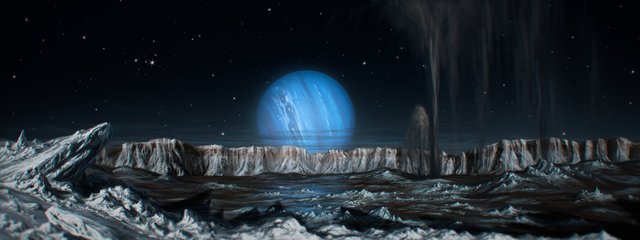
So, this is actually the largest natural satellite of Neptune that's been around here for a few billion years and it was officially discovered back in 1846 by an astronomer William La Salle. Now it's actually the only large moon in our solar system that orbits in the opposite direction of everything else. So, in an orbit system everything including the Neptune itself moves this way. Triton on the other hands moves the other way and there is a pretty good explanation about it and it's actually a relatively simple explanation. The explanation is that it's very likely that Triton is actually not from here it probably arrived here from the Kuiper belt and was very likely an object that we would technically refer to as a dwarf planet. So, if you actually compare Triton to Pluto which I'll do in the second by placing Pluto right next to Triton.

You'll notice that not only are they actually pretty much the same in terms of size their composition and their density is actually very similar as well. The density of Pluto is 1.87 and here in Triton it's 2.06. Their actual structure is very similar as well and for the most part Pluto and Triton are actually kind of twins or not twins, but they're very very similar. They have a lot of ice, water/ ice up to about 30% of their entire structures actually water and ice. They have relatively large core and they also have quite a lot of nitrogen on the surface and their coloration. Even though it doesn't look like that in this game, it's actually similar too. Triton also has these brown spots that are actually formed by something known as Solwings which are essentially different meeting molecules that were converted into these brown molecules by the effects of the Sun. So, basically Triton is an outsider. It came into the system from the Kuiper belt and was captured by Neptune. But the interesting story about it is that we don't really exactly know how it was captured. It's either collided with another moon or more likely used to be actually a part of a binary system. It's very likely that Triton had an object that orbited around and when it arrived into Neptune system, the other object that kicked out and because of the interaction of that object Triton lost a lot of velocity and it's about to crash into an action and basically it's sort of kind of got captured by Neptune.
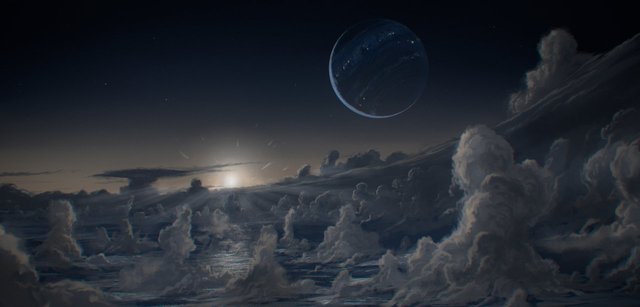
Now let's actually go back here for a second so the other evidence that Triton is not from here is the fact that what it arrives into the system it is very likely a kicked out. If you remember Jupiter has like 69. Even Uranus has a lot more because probably Triton sort of kicked most of them out when it arrived into the system with its relatively high gravitation Direction. Now overall Triton is actually very large moon. When the moon comes in terms of size at least, it's pretty much out there with the big ones. It's not as big as Titan and it's not as big as our own moon. But it's almost as big as the moons of Jupiter and it's definitely bigger than other moons in our solar system making it something like seventh largest moon in the solar system.
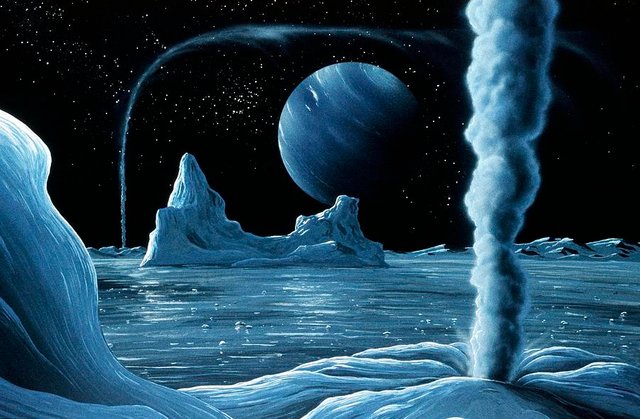
So, it is pretty large and it's pretty massive as well its radius is about 1300 Km which is actually very large and its mass is 2 times 10 to the power 22 Kilograms which by itself is quite impressive because if I actually compare it to our own moon which is a large moon to replace our own moon. Here you'll notice that it's mass is only about 3 times less than our own moon and it sizes only may be a little bit smaller by about 400 Km in radius but our own moon is actually more dense. So, that's why it's more massive as well. There is one unusual feature about Triton to have it's very reflective. Its albedo is almost 90 percent basically the reflects ninety percent of the light and it gets which obviously makes it very cold in the surface but also it's just unusual for an object like this.
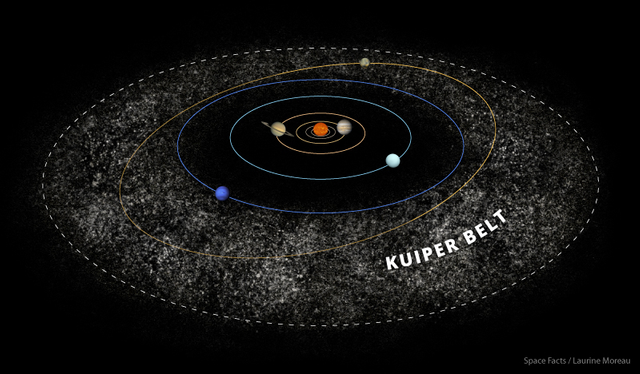
But it is very common for things like dwarf planets which also once again suggest that this is not actually a moon but probably captured or flooded and because it moves against the flow there's several things that may have happened what it was just captured. First of all, it probably received a lot of tidal heating it very likely was ridiculously hot here. So, the temperatures might have been well not on the outside but on the inside might have been enough for it to start smoking actually and basically probably evaporate a lot of stuff because it was so hot on the inside and that reflected on the outside by creating all sorts of volcanoes. Now cryovolcanism here is very common basically does have volcanoes and it's actually one of the few objects in our solar system that has very very new very refreshed sort of surface that's only about maximum 50 million years old. In other words, all the surface here gets renewed through all kinds of thick tectonic activity and cryovolcanism. So, because of this relatively young surface, we know that there's not enough impact craters here and in comparison to other moons it barely has 200 craters which is very unusually low for a moon of its age.
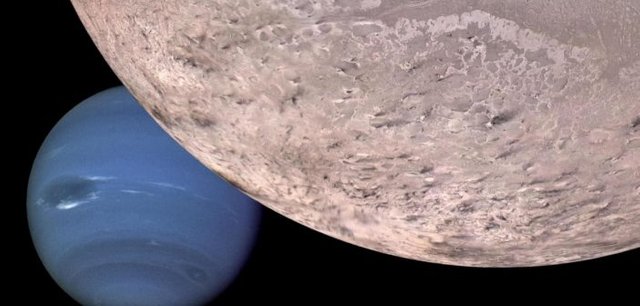
So, this suggests that this is one of the few objects similar to things like Io things like Enceladus that to have cryovolcanism and active replenishment of the surface and one thing about the Triton is that like many other moons it's tightly locked and this obviously took a while to get so meaning it's always pointed the same surface toward Neptune. But because it's tightly locked because it's moving against the flow it's actually slowly approaching Neptune. it's moving closer and closer to Neptune and within the next three point five billion years it's actually going to reach the area known as the Roche limit which also means that what's going to happen to beautiful Triton is that it's going to either collide with Neptune. But more likely it's actually going to moving it closer and closer and closer. So, this is like almost four billion years in the future and there it's going to fall apart. It's going to actually create a very large ring around Neptune very similar to the ring around Saturn and probably even bigger than that. It's very likely it's going to be the most biggest ring in our solar system and this is 3.5 billion years after today. Now it's not going to be very big in this case because our Triton is falling apart a little bit too fast. but it is going to be a very massive ring.

So. there is sort of the face of new Neptune four billion years in the future is going to have a very large ring system basically made up of leftover Triton stuff. Now there's a few other things we've actually discovered by Triton and that's despite the fact that only Voyager 2 got to actually take pictures of Triton and since then we haven't really been back to the Neptune system and we've only observed it with telescopes like Hubble. But that's just not enough for us to learn about it. So, we know that this system also has a nut system, but this one actually has a little bit of atmosphere ! not a lot! but just a little bit and the atmosphere is composed of nitrogen very similar to the atmosphere of Pluto and it's about 170 thousandth the pressure of Earth's atmosphere. So, basically here it's not really you wouldn't even call it atmosphere. But it is there so we have to call that atmosphere and it's made up of nitrogen that usually is present on a surface, but it sublimates and it's created by various volcanoes. So it's released into the outer surface here and then creates a kind of a thin layer around the moon and once in a while it actually does increase in pressure because sometimes Triton points with its poles directly toward the Sun and when that happens it gets seasons and during those seasons volcanoes are more active and produce even more hydrogen and it actually gets to point with both poles toward the Sun. So, it's actually quite a lot of extreme seasonal changes here and they occur depending on where Triton is in its orbit around Neptune. So, the seasonal changes on this moon are actually quite dramatic.
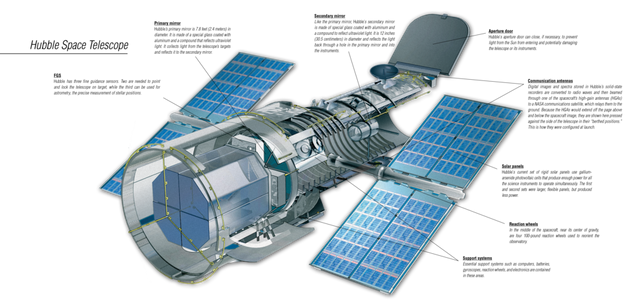
One of the last things I wanted to talk about is that there's actually quite a lot of unusual surface features on Triton and a lot of them would still can't really explain it for example there is actually something called cantaloupe terrain which kind of looks like basically a imbalanced surface and it's mostly dirty water ice that seems to only exist on Triton and we don't really know how it was formed but we think it's probably because of some sort of a density variation or underneath it. But we haven't seen it anywhere else in our solar system. So, Triton does have quite a lot of mysteries for us to discover. But the most important thing about right now is that it is actually a very good way for us to study not only how various dwarf planets interact with various gas giants. But also to study those dwarf planets and try to understand their composition because Triton was probably born on in Kuiper's belt, far away from the Sun and it probably has water that was later brought to our own planet Earth. So, the water on Triton is very similar to water on Earth and this kind of might give us an idea where water came from and how it actually form on our planet because we still don't really know what and how brought water to Earth. Thank you so much for reading my post. Hope you like it!


Supper Idea of the post
Thanks a lot.. Sorry for replying late I was out of station due to some medical purpose! :)